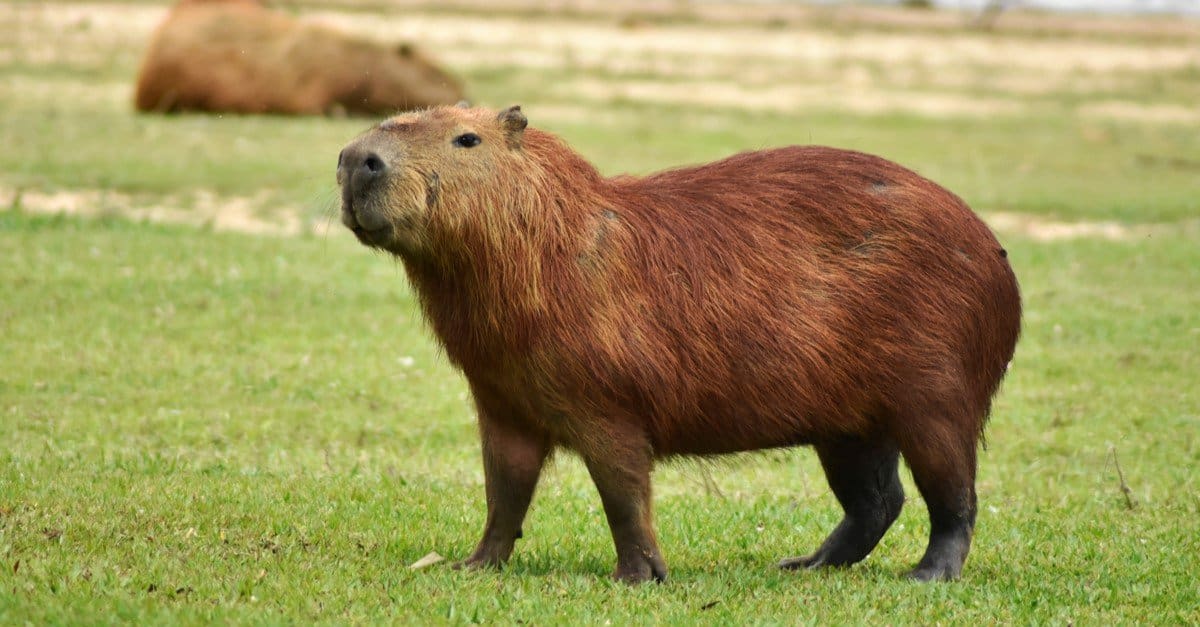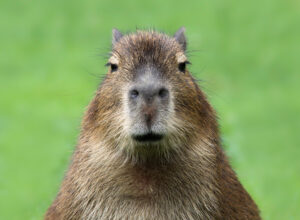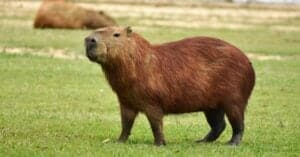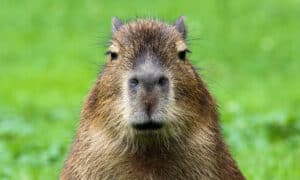You may have seen pictures of capybaras or videos of them bathing in hot springs and thought to yourself, “those are some weird-looking animals.” Capybaras are giant rodents that look like a cross between an oversized guinea pig and a beaver. But do you know that in many parts of South America, capybara meat is considered a delicacy? That’s right, some people eat capybaras! In fact, the popularity and demand for capybara meat have almost completely wiped out their populations in many areas. Here’s everything you need to know about this popular (and controversial) dish.
A History of Capybaras and Humans
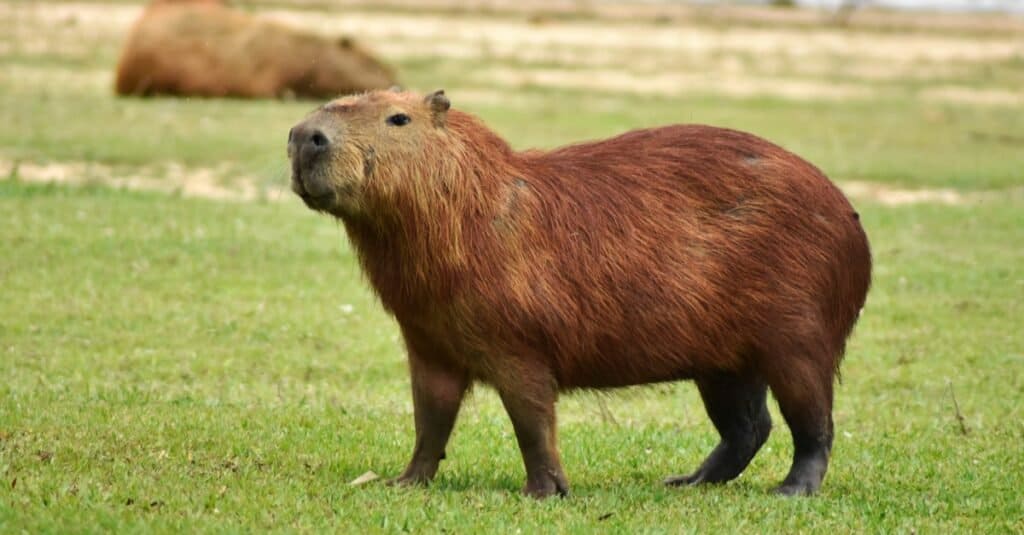
The largest living rodent is the capybara.
©Horus2017/Shutterstock.com
Capybara meat comes from, you guessed it, the capybara — the world’s largest rodent. Capybaras can weigh up to 150 pounds, are usually found near bodies of water, and live in large herds. They are native to South America, where they have been hunted for their meat for centuries (except for in Chile). Capybara meat is especially popular in Venezuela.
In Venezuela, the history of capybara meat is a long and complicated one. For centuries, the borrowing and eating of this type of meat was banned by the Catholic Church during Lent. Many people fast and abstain from eating red or white meat during this time, although fish often is acceptable. However, in Venezuela, capybara meat was so popular that sometime between the 16th and 18th centuries, clergymen petitioned to continue eating it during Lent. Although biology says otherwise, the Catholic Church agreed. They declared that the capybara was a “fish” and therefore acceptable to eat during Lent.
This exemption led to the widespread hunting of capybaras in Venezuela and other South American countries. The animals were so popular that their numbers began to dwindle rapidly, and capybara hunting threatened to wipe out the entire population of these animals in many areas.
How Common is Capybara Meat?
Capybara meat was popular enough that at one point, their populations got so low that the Venezuelan government was forced to step in and put regulations in place in order to protect them. Even with these protections in place, however, the demand for capybara meat is still quite high today. Farms and ranches in Venezuela raise capybaras for their meat. In fact, estimates suggest that there are less than a few hundred thousand capybaras in Venezuela, and many of them live on large ranches that are privately owned.
Controversies Over Capybara Meat
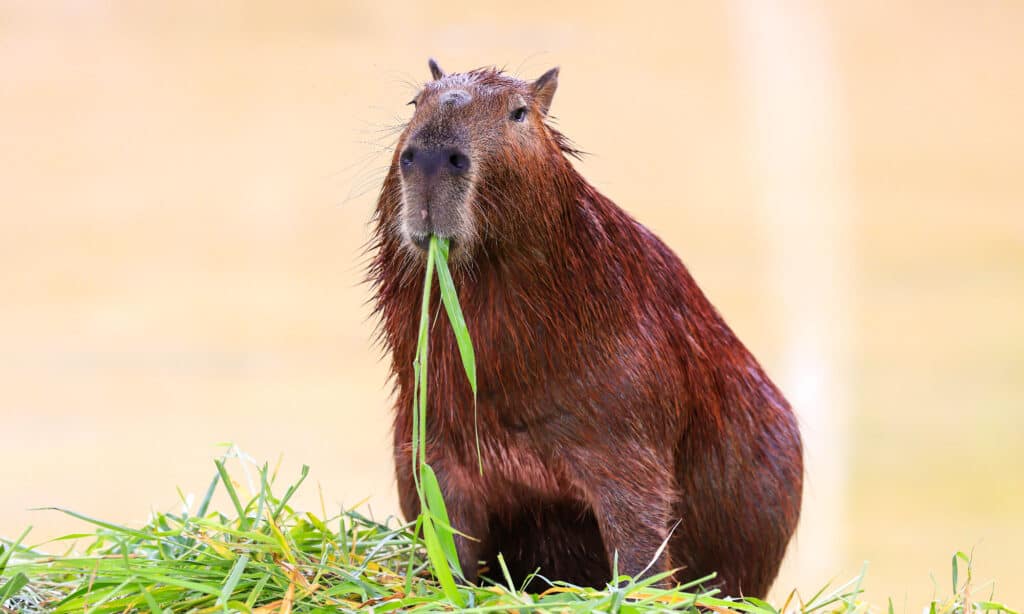
Capybaras are subject to illegal poaching.
©BeautifulPicture/Shutterstock.com
Capybaras in Venezuela are now protected by law. Only 20% of the population can be killed each year for food (most of which is done just before Lent). However, that doesn’t stop people from illegal poaching and selling the meat. It is believed that as much as 60% of the country’s capybara population is being killed each year, contributing to their decline.
Unfortunately, this illegal trade can be quite lucrative; capybara meat can fetch twice as much money as beef on the black market! Market vendors in the rural areas of Venezuela have a hard time saying no to selling capybara meat. Even though they could be arrested, not selling it could destroy their livelihoods and upset the local economies.
In addition, many people in South America see the annual capybara hunt and subsequent feasting as part of their cultural heritage. Hunting and eating capybaras is a practice that has been passed down through generations of indigenous people in South America. Today many of the same hunting techniques are still used, such as clubbing or using large sticks with hooks.
However, there is a growing debate on the ethics of how these animals are raised and killed. In fact, many studies have shown that giving the animals better care and humane treatment actually results in higher quality meat, with greater levels of protein and lower levels of saturated fat and cholesterol.
Additionally, the trade is not always as economical as it could be. For instance, some only keep the meat and discard the remainder of the animal. On the other hand, the hide can be used to make carpincho leather, which is soft but also extremely durable. Farmed capybaras in Argentina are used for both meat and leather manufacturing, for example.
What Does Capybara Meat Taste Like?
If you’re wondering what kind of flavor profile capybara meat has, you’re not alone. Since these animals are so strange looking, it’s only natural to be curious about what they taste like! According to those who have had the pleasure (or displeasure) of trying it, capybara meat tastes kind of like a combination of salty pork and fish, especially sardines. Ironically, the capybara’s scientific name, Hydrochoerus, actually means “water pig” in Latin.
The fishy flavor of the meat comes from the capybara’s diet. These semi-aquatic animals primarily eat aquatic plants and vegetation (and their own feces, but most servers fail to include that information in the menu). However, it does not entirely taste like fish either, but more of a fishy red meat. Most of the time capybara meat is dried, salted, and shredded, and then put into anything from casseroles to soups to empanadas.
Capybara meat is often cooked over an open fire and served with Arepas (a type of cornmeal cake). If you’re interested in trying this dish, your best bet would be to head to Venezuela (or any other South American country where it’s popular). However, given the controversial nature of the dish, you may want to think twice before ordering it off the menu.
Up Next:
Thank you for reading! Have some feedback for us? Contact the AZ Animals editorial team.

